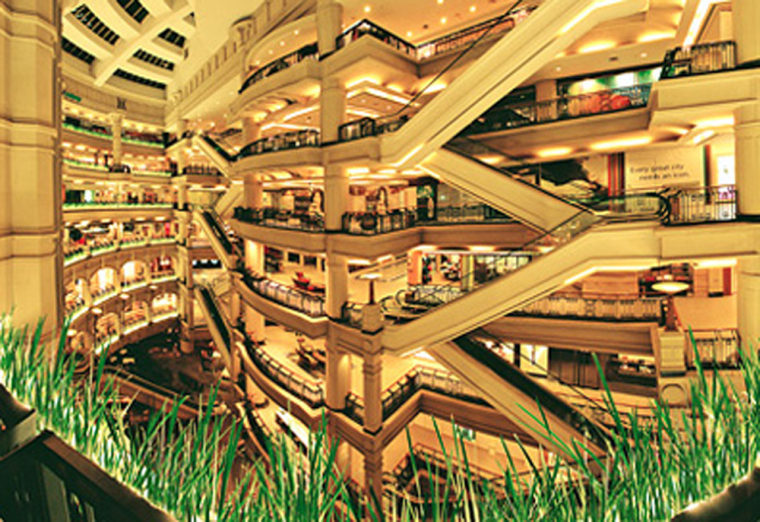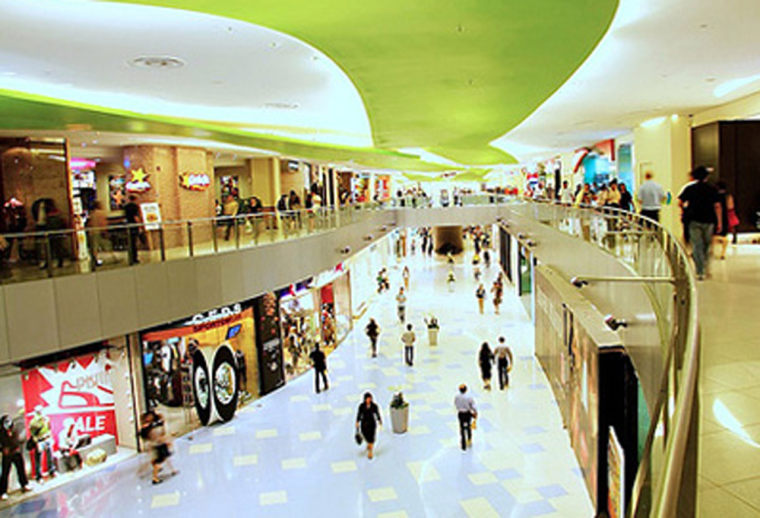In the U.S., malls have been out of fashion for at least a decade, derided as soulless and criticized for devastating downtown shopping districts. In some ways, the critique has become a self-fulfilling prophecy. Urban trendsetters abandoned malls to packs of slouching teenagers, instead scouring under-the-radar boutiques for the latest in fashion, and the jumbo shopping hubs have become symbols of suburban ennui.
In Asia, by contrast, malls are the future. Bright, shiny and packed with life, the Asian mall is the epitome of a fun, social shopping experience. Instead of a fast food court, Asian malls are often packed with a plethora of high-end dining choices. Consider Starhill Gallery, one of the most prestigious malls in the Malaysian capital of Kuala Lumpur.
Connected to the local Ritz-Carlton hotel, Starhill not only gives shoppers access to some of the top clothing and accessories brands in the world (Kenzo, Christian Door, Porsche Design, Louis Vuitton and others), it also has an entire Feast Village on its lower floor. This collection of more than a dozen restaurants features a wide choice of cuisine, from Chinese to Malaysian, Japanese to seafood, Korean to Thai—all presented with a level of style, excitement and panache unparalleled in U.S. shopping centers. The Starhill Gallery has proven so successful that its developer, YTL Corp Bhd is reportedly fielding offers to take the concept abroad to cities like , and .
Dubai, of course, is no stranger to fantastical malls. It’s home to Mall of the Emirates, 2.4 million square feet of shopping with full Wi-Fi Internet coverage, a water-and-fire fountain and an indoor ski slope for those endless Middle Eastern summer days.
But Starhill is hardly the only major shopping mall in Kuala Lumpur. The six-level, stylish Suria KLCC mall is located at the base of the Petronas Towers, the César Pelli-designed buildings that are currently the tallest twin skyscrapers in the world. KLCC contains not only high-end shops (Ermenegildo Zegna, Anya Hindmarch, Paul Smith, etc.) and restaurants, but also a science center and art gallery.
And across town, the Berjaya Times Square mall offers 1,000 stores, a karaoke lounge, the largest cinema in Southeast Asia and an indoor amusement park complete with looping roller coaster.
As an American encountering such sparkling shopping meccas, it’s humbling to consider that Malaysia still considers itself a developing nation and does not even aim to achieve “developed” status until 2020. One can only wonder then what the country’s malls will contain—perhaps space elevators that shoot patrons on quick trips to orbital juice bars.
Meanwhile, around the rest of Asia, malls of this magnitude and with equal arrays of amenities are quickly becoming the norm. In Japan, the new Midtown complex includes a five-star hotel (Ritz-Carlton again), the Suntory Museum of Art, gardens and parkland, a design pavilion plus an assortment of chic shops including Harry Winston, Bottega Veneta and Issey Miyake. The complex has three dozen cafes and restaurants, including a wine bar owned by Francis Ford Coppola. If you literally do shop until you drop, there’s even an on-site medical clinic.

Fly into or out of and you could be convinced that the new Suvarnabhumi Airport is a gigantic mall that happens to also accommodate airplanes. Or take one of those flights to Taiwan and marvel at the newly opened Dream Mall in the southern city of Kaohsiung. The largest shopping center in Taiwan, the Dream Mall, covers more than 4 million square feet of floor space and is topped with a 334-foot-tall Hello Kitty-themed ferris wheel that offers ocean views.
In this virtual consumer arms race, each new developer eagerly seeks to load his shopping center with impressive amenities. In Singapore’s VivoCity, a rooftop sky park makes the mall into a family-friendly destination. Seoul’s COEX Mall has an aquarium with 650 species of wildlife as well as a kimchi museum honoring the spicy fermented cabbage dish.
The Asian giants are in the mall race as well. China is out to an early lead with massive developments like Beijing Mall and South China Mall, but look for to embark on a mall-building spree in coming years. For anyone who loves to hate malls, a trip around Asia shows that the a shopping megalopolis can actually be a thing of beauty.
